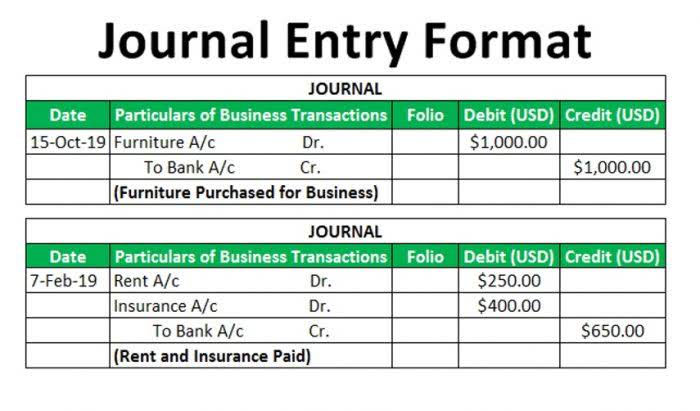Retained earnings represent a useful link between the income statement and the balance sheet, as they are recorded under shareholders’ equity, which connects the two statements. This reinvestment into the company aims to achieve even more earnings in the future. Retained earnings represent the portion of a company’s profits that is kept within the business instead of being distributed to shareholders as dividends. These earnings accumulate over time and can be used for various purposes, such as funding business expansion, paying off debt, or reinvesting in operations. The retained earnings (or retention) ratio refers to the amount of earnings retained by the company compared to the amount paid to shareholders in dividends. It’s essentially a comparison between the money earmarked for reinvestment and the money paid to investors in dividend payments.
Create a free account to unlock this Template
Remember that your company’s retained earnings account will decrease by the amount of dividends paid out for the given accounting period. When calculating retained earnings, you’ll need to incorporate all forms of dividends; you’ll see that stock and cash dividends can impact the final number significantly. A company reports retained earnings on a balance sheet under the shareholders equity section. It’s important to calculate retained https://xohanoc.info/122.html earnings at the end of every accounting period. Essentially, you find your retained earnings by adding together your beginning holdings and your net income or loss for the accounting period, and then you subtract all dividends paid out (both cash and stock). If you don’t feel confident tallying this important number on your own, look to Skynova’s accounting software to help you quickly and accurately calculate retained earnings.
Losses to the Company
There are some limitations with retained earnings, as these figures alone don’t provide enough material information about the company. Management knows that shareholders prefer receiving dividends, but they may https://metal4u.ru/news/by_id/6502 not distribute dividends to stockholders. If they are confident that this surplus income can be reinvested in the business, then it can create more value for the stockholders by generating higher returns.
Ask a Financial Professional Any Question
The word “retained” means that the company didn’t pay the earnings to its shareholders as dividends. Retained earnings are calculated by adding/subtracting the current year’s net profit/loss to/from the previous year’s retained earnings and then subtracting the dividends paid in the current year from the same. Retained earnings at the beginning of the period are actually the previous year’s retained earnings. This can be found in the balance of the previous year, under the shareholder’s equity section on the liability side. In our example, December 2023 is the current year for which retained earnings need to be calculated, so December 2022 would be the previous year.
- Add your net income and subtract dividends paid to get the end balance of your retained earnings.
- Companies may pay out either cash or stock dividends, and in the case of cash dividends they result in an outflow of cash and are paid on a per-share basis.
- The main difference between retained earnings and profits is that retained earnings subtract dividend payments from a company’s profit, whereas profits do not.
- To obtain the net income or earnings, it is recommended that you check the company’s annual report.
- For example, if a company declares a stock dividend of 10%, meaning the company would have to issue 0.10 shares for each share held by the existing stockholders.
What is your current financial priority?
Shareholders equity—also stockholders’ equity—is important if you are selling your business, or planning to bring on new investors. In that case, they’ll look at your stockholders’ equity in order to measure your company’s worth. You can find this number by subtracting your company’s total expenses from its total revenue for the period. It tells you how much profit the company has made or lost within the established date range. Finally, companies can also choose to repurchase their own stock, which reduces retained earnings by the investment amount. By understanding these factors, your business can make informed decisions about how to manage its retained earnings.
How Companies Use Retained Earnings
- All of the other options retain the earnings for use within the business, and such investments and funding activities constitute retained earnings.
- Ensure your investment aligns with your company’s long-term goals and core values.
- We can cross-check each of the formula figures used in the retained earnings calculation with the other financial statements.
- If you use retained earnings for expansion, you’ll need to determine a budget and stick to it.
- In contrast, when a company suffers a net loss or pays dividends, the retained earnings account is debited, reducing the balance.
- If your business is seasonal, like lawn care or snow removal, your retained earnings may fluctuate substantially from one quarter to the next.
Learn how to find and calculate retained earnings using a company’s financial statements. Retained earnings also provide a financial cushion, allowing a company to weather economic downturns, pay off https://povar.me/about/ debt, or manage unexpected expenses without raising additional capital. Companies can strengthen their financial stability and support long-term growth by keeping some profits within the business.
Why Are Retained Earnings Important for Small Business Owners?
The discretionary decision by management to not distribute payments to shareholders can signal the need for capital reinvestment(s) to sustain existing growth or to fund expansion plans on the horizon. No, Retained Earnings represent the cumulative profit a company has saved over time. Retained earnings encompass all earnings retained by the company, whether they come from core business operations, one-time windfalls, or investment gains. It’s vital to differentiate between these sources of earnings when assessing a company’s financial strategy and sustainability. Don’t forget to record the dividends you paid out during the accounting period. Net profit refers to the total revenue generated by a company minus all expenses, taxes, and other costs incurred during a given accounting period.
What is the difference between retained earnings and revenue?
Profits generally refer to the money a company earns after subtracting all costs and expenses from its total revenues. Retained earnings act as a reservoir of internal financing you can use to fund growth initiatives, finance capital expenditures, repay debts, or hire new staff. It can go by other names, such as earned surplus, but whatever you call it, understanding retained earnings is crucial to running a successful business. Examples of these items include sales revenue, cost of goods sold, depreciation, and other operating expenses. Non-cash items such as write-downs or impairments and stock-based compensation also affect the account. Below is a copy of the balance sheet for Meta (META), which owns Facebook and Instagram, as reported in the company’s annual 10-K for 2018, filed on Jan. 31, 2019, when it was still known as Facebook, Inc.












